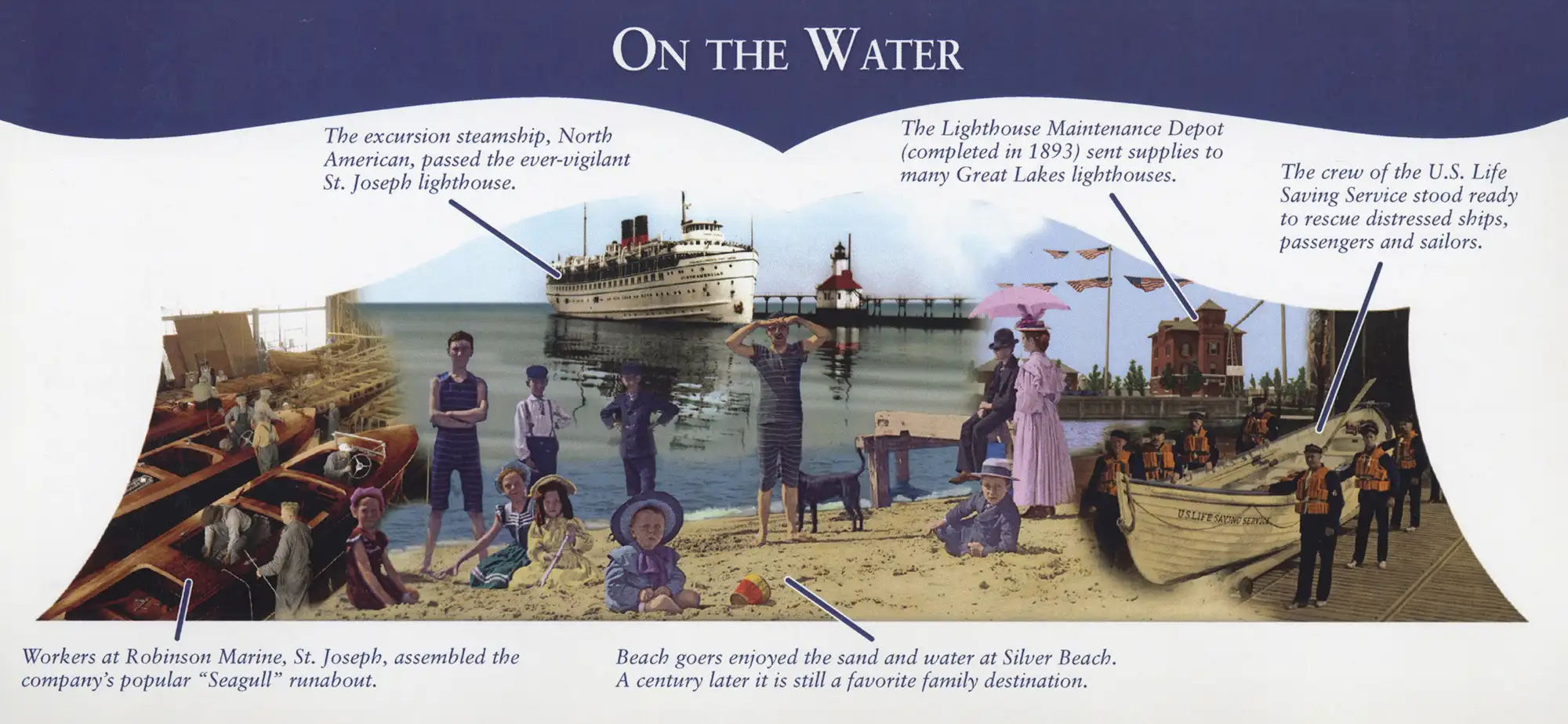
On the Water
The Great Lakes region contains five of the world’s largest freshwater lakes. Lake Michigan is the second largest of the five with 22,400 square miles of surface area. It is the only Great Lake that is bounded entirely within the United States. Its moonlit waters gave Silver Beach its name. Beyond Lake Michigan’s sandy shores there are hundreds of inland lakes, ponds, streams and rivers, too.
Our waterways are an integral part of our history. The first European travelers to Michigan Territory were French explorers and trappers who were accompanied by Jesuit priests. These intrepid discoverers used water to reach their destinations. Many times they portaged overland to connect to the next lake or river.
As civilization progressed, sailing ships crossed Lake Michigan, hauling much-needed supplies between ports of call. Steam power allowed more goods to be transported with improved reliability. With the advent of the middle class, excursion boats began bringing passengers to and from our port. Boat builders also started businesses along our waterways. The notorious Chicago gangster Al Capone owned one of the popular “Seagull” runabouts assembled by Robinson Marine in the 1920s.
Our maritime history tells of Lake Michigan’s treacherous waters. But the Lake became safer when the government installed lighthouses and life-saving services. The original St. Joseph lighthouse was one of the first two lighthouses built in Michigan (1832). The current lighthouse has stood vigilant on the North Pier since 1907.
The Lighthouse Maintenance Depot on the St. Joseph River (completed in 1893) provided supplies to the 9th District of the U.S. Lighthouse Establishment and offered storage and maintenance for buoys used by 114 lighthouses. Today the St. Joseph Yacht Club uses the structure.
In 1874, the U.S. Life Saving Service began rescuing distressed ships, passengers and crew. Now the U.S. Coast Guard provides maritime protection for our waters.
The On the Water Rounding Board was made possible by a donation from William and Jane Marohn.